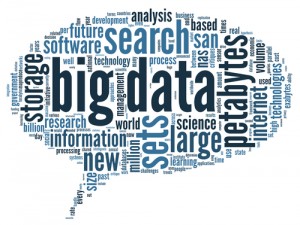3 steps to harnessing big data in retail
 Retailers have increasing amounts of data at their fingertips, but this is nothing without: 1. a clear strategy of what to use and how to use data in order to compete with other retailers and 2. the correct deployment of a model that can extract and deliver the information required.
Retailers have increasing amounts of data at their fingertips, but this is nothing without: 1. a clear strategy of what to use and how to use data in order to compete with other retailers and 2. the correct deployment of a model that can extract and deliver the information required.
For retailers to fully exploit data and analytics three mutually supportive capabilities must be adhered to:
1. Choose the right data
Retailers should identify, combine, and manage multiple sources of data. In doing so they can be creative about how they source data by utilising existing data already stored such as customer loyalty data, product reviews, sales and return figures, etc. In addition to this, external and new sources of data can be used to generate non-traditional, unstructured data such as social media in the form of conversations, photos, and video. As a guide to which data is more useful, retailers are advised to be specific about the business problems and opportunities they need to address, and source data accordingly.
2. Build models that support business targets
IT support is crucial to attaining data and should be prioritised on a retailer’s business agenda. The first port of call is to quickly identify and connect the most important data for use in analytics, followed by a clean up operation of duplicate data and recognition of missing information. Of course data alone is not advantageous, what’s needed is an analytics model that can predict and optimise performance improvements and competitive advantage. Retailers should start by identifying a business opportunity and determine how the model can improve performance, and then build the simplest model that can deliver these requirements.
3. Transform your retailing practices
Using big data requires considered organisational change. For starters when building an analytics model it should be business-relevant, and complement day-to-day retail processes and decision-making. To do this the model designer needs to understand what information a retailer manager bases their actions on in order to deliver company targets. To use the model retail staff then need intuitive tools and interfaces that help them with their jobs, as well as any necessary supportive training, role modelling by leaders, as well as incentives and metrics.
Kurt Kendall, McKinsey’s business lead for its consumer and marketing analytics centre, outlines how a retailer can take advantage of data: “With the right capabilities, you can take a whole array of new data sources – web browsing data, social data and geotracking data – and develop a much more complete profile and with this information, segment better,” he says.
“When a customer is standing in the store, a retailer can mine their databases and determine whether this is someone they want to keep and what it will take to keep them,” says Kendall.
“The retailer can combine information it has about past purchases with details about the customer collected through the company’s Facebook page and elsewhere to determine exactly what price to sell the item and if it is right to negotiate,” he adds.
According to PSFK Labs every product interaction can be converted into a purchase opportunity through data driven commerce platforms that both meet and anticipate customer needs.
The introduction of such big data programmes is seeing several trends emerging:
- Organisations are responding to changes in the marketplace, developing better tools for customers and staff that add efficiencies into the shopping experience.
- Strategies are being built by understanding what data matters most to the business and experimenting with what works.
- Retailers aren’t just taking the shopper from discovery to checkout. They are approaching the sale by deciding how checkout and fulfilment should work to ensure the best end-to-end experience.
- Shoppers are treated like individuals through the development of personalised tools and services that reflect shopping history. As a result, greater value is added to the overall consumer experience, and the transaction is more enjoyable, allowing customers to keep their focus on the excitement of their new purchase.
On the subject PSFK’s Piers Fawkes says, “People’s needs and expectations around shopping remain largely unchanged. We’re seeing the digital and physical worlds start to converge, creating a new model for the retail marketplace. … By syncing the capabilities of all of their platforms, retailers and brands can add convenience and efficiencies…creating more opportunities for personalised service, product discovery and relationship building.”
Sources: www.mckinsey.com and www.psfk.com


No comments yet.